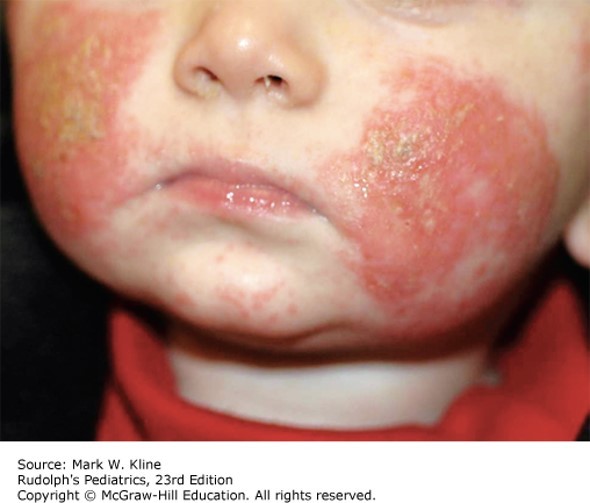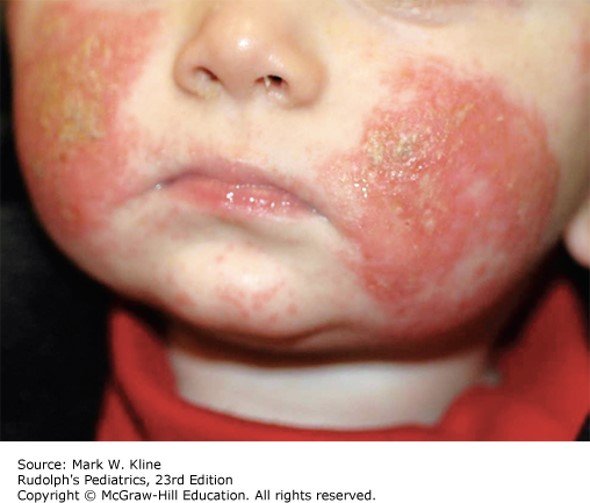Skin Disorders Case

His mother notes that his skin problems tend to flare in the winter months. Social history is notable for a pet cat. You suspect atopic dermatitis.

What additional cutaneous finding supports your diagnosis?
A. Alopecia.
B. Erythema and scale of alar creases.
C. Keratosis pilaris.
D. Nail pits.
E. Scaling of elbows and knees.
The correct answer is “C.” The boy in this case has atopic dermatitis, which is associated with keratosis pilaris (KP). KP is an example of retention hyperkeratosis, characterized by adherent keratin at the apex of the hair follicle. KP has a rough, sandpaper texture and may be red in color. It is typically located on the extensor arms, thighs, cheeks, and buttocks. (See Figure 33–1.) Erythema and scale of the alar creases (creases near the tip of the nose) is more typical of seborrheic dermatitis. The scale is yellow, greasy, and concentrates on the scalp, postauricular sulci, brows, glabella, alar creases, nasolabial folds, mental crease, central chest, axillae, and groin. Nail pits (small depressions) and oil spots (yellow discoloration of the nail bed) as well as scaling of elbows and knees are classic for psoriasis. The terms atopic dermatitis and eczema may be used interchangeably. In addition to KP, eczema may present with additional cutaneous findings, including ichthyosis vulgaris (dry skin with fish-scale appearance), pityriasis alba (ill-defined hypopigmented patches of the face, trunk, and extremities), hyperlinear palms, Dennie-Morgan lines (extra skinfold under the eyes), and allergic salute (transverse nasal crease due to repeated rubbing of the nose). (See Figure 33–2.)
Sources:
Question & Explanation: Peterson AR, Wood KE. Pediatrics Examination and Board Review. New York, NY: McGraw-Hill Education; 2017.
Photo: Kline MW. Rudolph's Pediatrics, 23e; 2018.




Create a Free MyAccess Profile
AccessMedicine Network is the place to keep up on new releases for the Access products, get short form didactic content, read up on practice impacting highlights, and watch video featuring authors of your favorite books in medicine. Create a MyAccess profile and follow our contributors to stay informed via email updates.